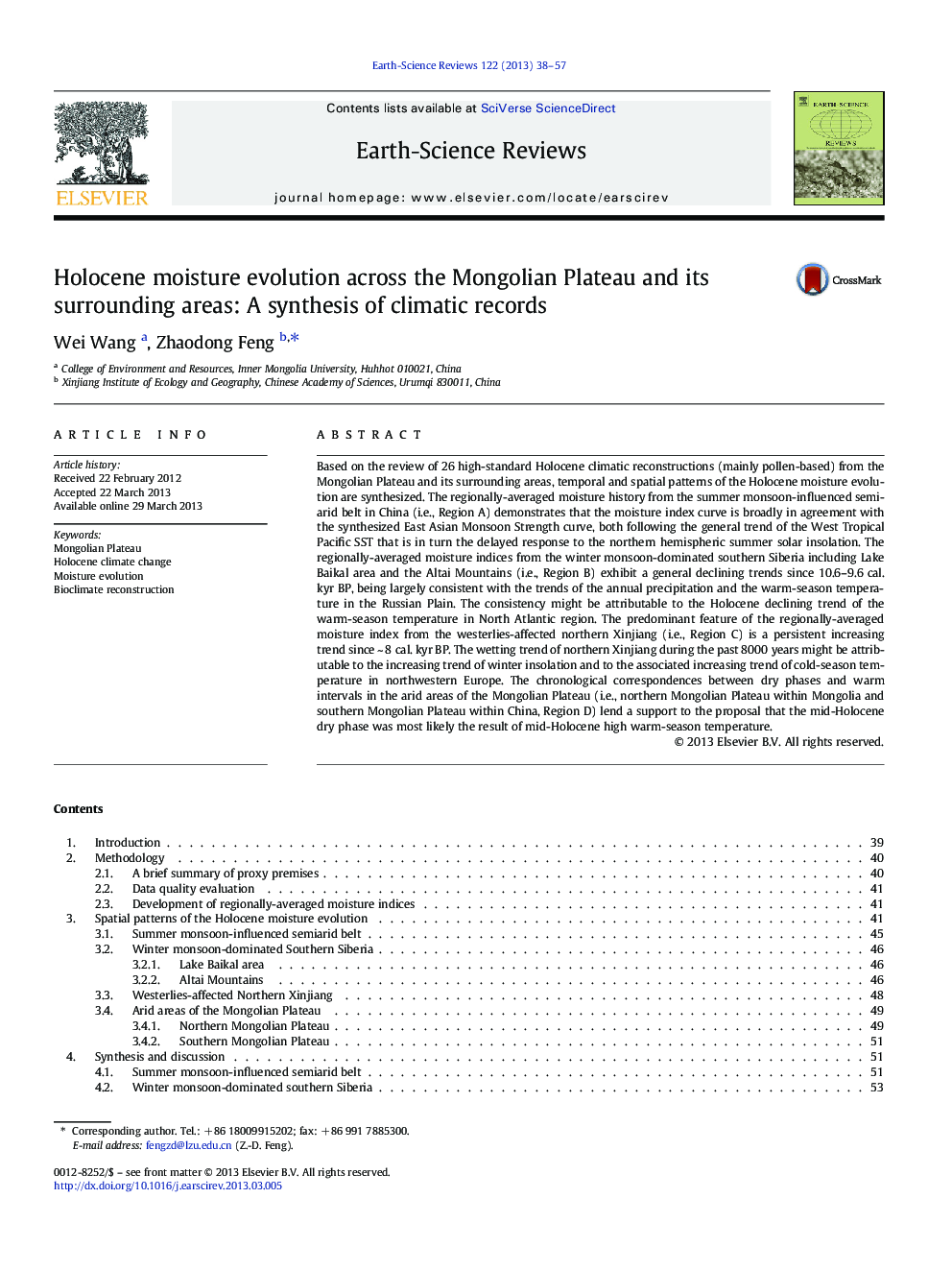| کد مقاله | کد نشریه | سال انتشار | مقاله انگلیسی | نسخه تمام متن |
|---|---|---|---|---|
| 4725842 | 1639980 | 2013 | 20 صفحه PDF | دانلود رایگان |
Based on the review of 26 high-standard Holocene climatic reconstructions (mainly pollen-based) from the Mongolian Plateau and its surrounding areas, temporal and spatial patterns of the Holocene moisture evolution are synthesized. The regionally-averaged moisture history from the summer monsoon-influenced semiarid belt in China (i.e., Region A) demonstrates that the moisture index curve is broadly in agreement with the synthesized East Asian Monsoon Strength curve, both following the general trend of the West Tropical Pacific SST that is in turn the delayed response to the northern hemispheric summer solar insolation. The regionally-averaged moisture indices from the winter monsoon-dominated southern Siberia including Lake Baikal area and the Altai Mountains (i.e., Region B) exhibit a general declining trends since 10.6–9.6 cal. kyr BP, being largely consistent with the trends of the annual precipitation and the warm-season temperature in the Russian Plain. The consistency might be attributable to the Holocene declining trend of the warm-season temperature in North Atlantic region. The predominant feature of the regionally-averaged moisture index from the westerlies-affected northern Xinjiang (i.e., Region C) is a persistent increasing trend since ~ 8 cal. kyr BP. The wetting trend of northern Xinjiang during the past 8000 years might be attributable to the increasing trend of winter insolation and to the associated increasing trend of cold-season temperature in northwestern Europe. The chronological correspondences between dry phases and warm intervals in the arid areas of the Mongolian Plateau (i.e., northern Mongolian Plateau within Mongolia and southern Mongolian Plateau within China, Region D) lend a support to the proposal that the mid-Holocene dry phase was most likely the result of mid-Holocene high warm-season temperature.
Journal: Earth-Science Reviews - Volume 122, July 2013, Pages 38–57
